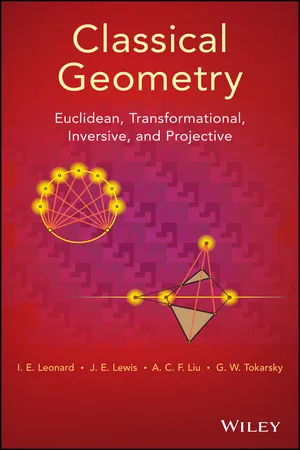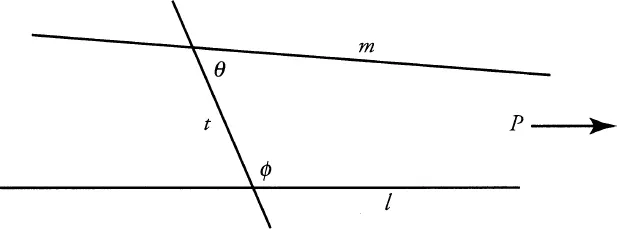
Classical Geometry
Euclidean, Transformational, Inversive, and Projective
- English
- ePUB (mobile friendly)
- Available on iOS & Android
Classical Geometry
Euclidean, Transformational, Inversive, and Projective
About this book
Features the classical themes of geometry with plentiful applications in mathematics, education, engineering, and science
Accessible and reader-friendly, Classical Geometry: Euclidean, Transformational, Inversive, and Projective introduces readers to a valuable discipline that is crucial to understanding bothspatial relationships and logical reasoning. Focusing on the development of geometric intuitionwhile avoiding the axiomatic method, a problem solving approach is encouraged throughout.
The book is strategically divided into three sections: Part One focuses on Euclidean geometry, which provides the foundation for the rest of the material covered throughout; Part Two discusses Euclidean transformations of the plane, as well as groups and their use in studying transformations; and Part Three covers inversive and projective geometry as natural extensions of Euclidean geometry. In addition to featuring real-world applications throughout, Classical Geometry: Euclidean, Transformational, Inversive, and Projective includes:
- Multiple entertaining and elegant geometry problems at the end of each section for every level of study
- Fully worked examples with exercises to facilitate comprehension and retention
- Unique topical coverage, such as the theorems of Ceva and Menalaus and their applications
- An approach that prepares readers for the art of logical reasoning, modeling, and proofs
The book is an excellent textbook for courses in introductory geometry, elementary geometry, modern geometry, and history of mathematics at the undergraduate level for mathematics majors, as well as for engineering and secondary education majors. The book is also ideal for anyone who would like to learn the various applications of elementary geometry.
Frequently asked questions
- Essential is ideal for learners and professionals who enjoy exploring a wide range of subjects. Access the Essential Library with 800,000+ trusted titles and best-sellers across business, personal growth, and the humanities. Includes unlimited reading time and Standard Read Aloud voice.
- Complete: Perfect for advanced learners and researchers needing full, unrestricted access. Unlock 1.4M+ books across hundreds of subjects, including academic and specialized titles. The Complete Plan also includes advanced features like Premium Read Aloud and Research Assistant.
Please note we cannot support devices running on iOS 13 and Android 7 or earlier. Learn more about using the app.
Information
PART I
EUCLIDEAN GEOMETRY
CHAPTER 1
CONGRUENCY
1.1 Introduction
Assumed Knowledge




Notation and Terminology




Table of contents
- Cover
- Half Title page
- Title page
- Copyright page
- Preface
- Part I: Euclidean Geometry
- Part II: Transformational Geometry
- Part III: Inversive and Projective Geometries
- Bibliography
- Index